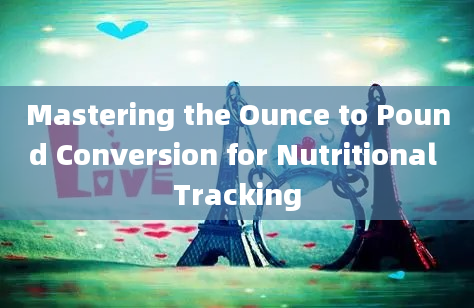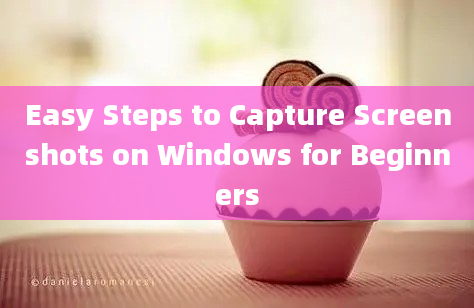Mastering the Ounce to Pound Conversion for Nutritional Tracking

Accurate nutritional tracking is essential for maintaining a healthy diet, managing weight, and achieving fitness goals. One of the fundamental aspects of this process is understanding and mastering the conversion between ounces and pounds. This article delves into the importance of this conversion, provides a detailed guide on how to do it, and explores its applications in nutritional tracking.
Why is Ounce to Pound Conversion Important?
The ounce (oz) and pound (lb) are common units of mass used in the United States and other countries that follow the imperial system. In nutritional tracking, food items are often measured in ounces, while body weight and larger quantities of food are typically recorded in pounds. Therefore, being able to convert between these units is crucial for accurate data entry and analysis.
According to the Academy of Nutrition and Dietetics, precise measurements are vital for effective dietary planning and monitoring [1](https://www.eatright.org/food/nutrition/healthyeating/keepingafooddiary). Incorrect conversions can lead to misinterpretation of nutritional intake, potentially undermining dietary goals.
How to Convert Ounces to Pounds
The conversion between ounces and pounds is straightforward. There are 16 ounces in one pound. The formula to convert ounces to pounds is:
\[ \text{Pounds} = \frac{\text{Ounces}}{16} \]
For example, if you have 32 ounces of a food item, the conversion to pounds would be:
\[ \text{Pounds} = \frac{32}{16} = 2 \text{ pounds} \]
Conversely, to convert pounds to ounces, you multiply the number of pounds by 16:
\[ \text{Ounces} = \text{Pounds} \times 16 \]
Applications in Nutritional Tracking
1. Food Portioning: Many food labels provide nutritional information per ounce. Understanding how many ounces make up a pound helps in portioning food correctly.
2. Body Weight Monitoring: Body weight is often tracked in pounds, while dietary intake might be recorded in ounces. Accurate conversion ensures that the data aligns correctly.
3. Recipe Adjustments: When scaling recipes up or down, converting between ounces and pounds can help maintain the correct proportions of ingredients.
4. Macronutrient Tracking: Macronutrients like proteins, carbohydrates, and fats are often measured in ounces. Converting these measurements to pounds can provide a clearer picture of overall intake.
Tools and Resources
Several tools and resources can aid in mastering ounce to pound conversion:
Digital Scales: Highprecision digital scales can measure food in both ounces and pounds, making it easier to track nutritional intake accurately.
Mobile Apps: Apps like MyFitnessPal and Lose It! offer builtin converters and databases for nutritional tracking [2](https://www.myfitnesspal.com/).
Conclusion
Mastering the ounce to pound conversion is a fundamental skill for anyone involved in nutritional tracking. It ensures accuracy in dietary planning, portion control, and overall health management. By understanding the conversion process and utilizing available tools, individuals can enhance their nutritional tracking efforts and achieve their health and fitness goals more effectively.
Frequently Asked Questions (FAQs)
Q1: How many ounces are in a pound?
A1: There are 16 ounces in one pound.
Q2: Why is accurate conversion important for nutritional tracking?
A2: Accurate conversion ensures precise measurement of food intake and body weight, which is crucial for effective dietary planning and achieving health goals.
Q3: What is the formula to convert ounces to pounds?
A3: The formula to convert ounces to pounds is \[ \text{Pounds} = \frac{\text{Ounces}}{16} \].
Q4: How can I convert pounds to ounces?
A4: To convert pounds to ounces, multiply the number of pounds by 16: \[ \text{Ounces} = \text{Pounds} \times 16 \].
Q5: Are digital scales accurate for measuring both ounces and pounds?
A5: Yes, highprecision digital scales are designed to measure both ounces and pounds accurately, making them useful for nutritional tracking.
Q6: Can mobile apps help with ounce to pound conversion?
A6: Yes, many mobile apps like MyFitnessPal and Lose It! have builtin converters and databases that assist with nutritional tracking and conversions.
Q7: Why is portion control important in nutritional tracking?
A7: Portion control helps in managing calorie intake, ensuring that you consume the right amount of nutrients, and maintaining a balanced diet.
Q8: How does incorrect conversion affect dietary planning?
A8: Incorrect conversion can lead to misinterpretation of nutritional intake, potentially causing overeating or undereating, which can undermine dietary goals.
Q9: What are some common tools for measuring food in ounces and pounds?
A9: Common tools include digital scales, measuring cups, and spoons. Digital scales are particularly useful for precise measurements.
Q10: Where can I find more resources on nutritional tracking?
A10: Resources can be found on websites like the Academy of Nutrition and Dietetics [1](https://www.eatright.org/) and through mobile apps designed for health and fitness tracking [2](https://www.myfitnesspal.com/).
By addressing these common questions, individuals can gain a better understanding of the importance and practical application of ounce to pound conversion in nutritional tracking.










